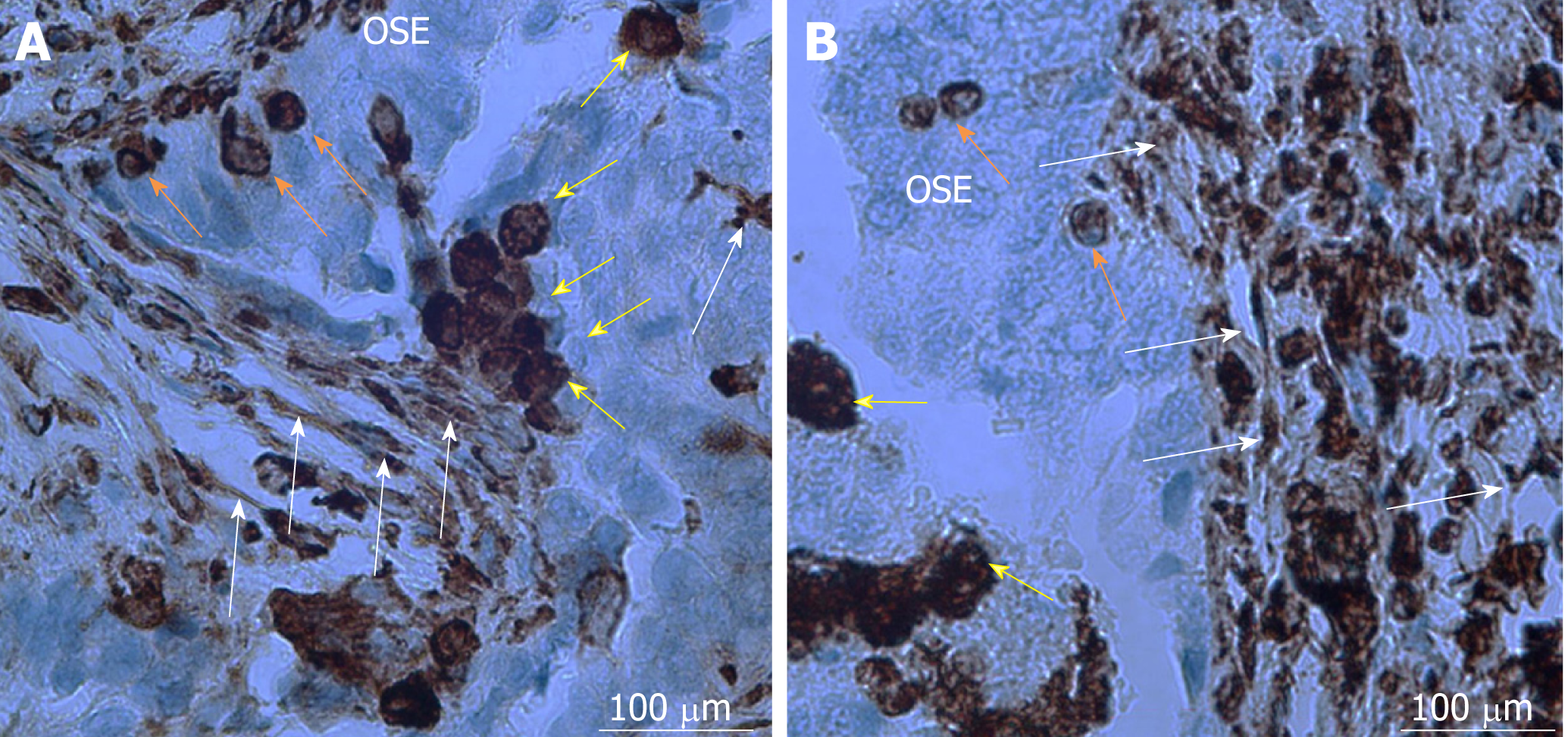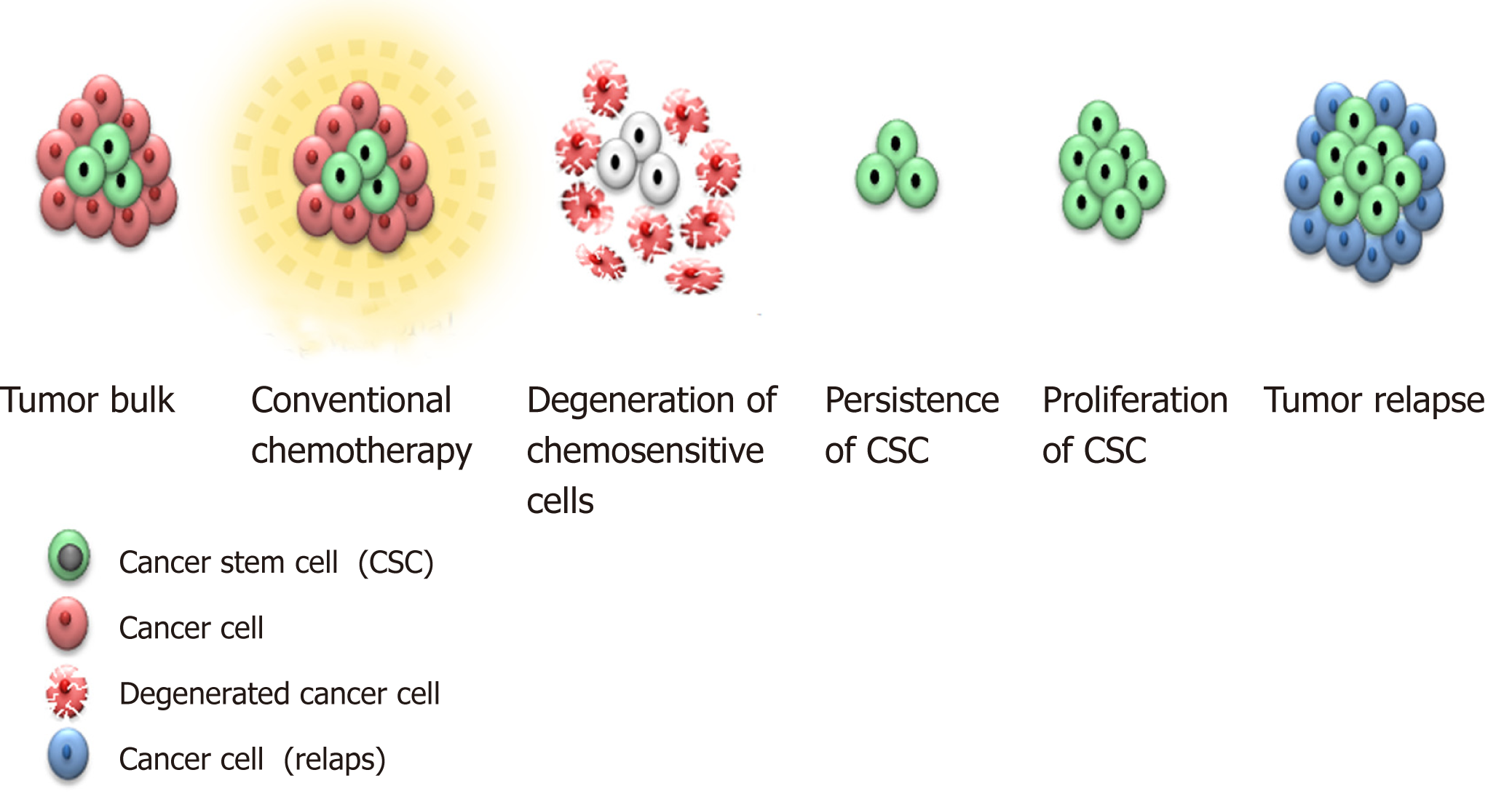Copyright
©The Author(s) 2019.
World J Stem Cells. Jul 26, 2019; 11(7): 383-397
Published online Jul 26, 2019. doi: 10.4252/wjsc.v11.i7.383
Published online Jul 26, 2019. doi: 10.4252/wjsc.v11.i7.383
Figure 1 Cancer stem cells in ovarian cancer tissue sections after immunohistochemistry for vimentin.
A, B: Vimentin-positive small stem cells (≤ 5 μm) in ovarian surface epithelium (orange arrows, A and B) are developing into bigger round cells (10-15 μm) (yellow arrows, A and B) and mesenchymal-like stem cells (white arrows, A and B) by making elongations and protrusions. Legend: brown color-positivity for vimentin. Red bar: 100 μm.
Figure 2 Hypothetical model of epithelial-mesenchymal transition.
Small, progenitor very small embryonic-like stem cells (diameters of about 5 μm) among the epithelial cells in the ovarian surface epithelium develop into bigger round cells (diameters of 10-15 μm) and (in)-directly undergo transformation into mesenchymal-like stem cells.
Figure 3 Diagrammatic representation of treatment influence on ovarian cancer.
Cancer cells are sensitive to standard treatment with cytostatic chemotherapy leading to cells destruction and reduction of tumor size. Cancer stem cells are resistant to standard treatment with cytostatic chemotherapy, so they persist and further proliferate, leading to tumor relapse even richer in cancer stem cells and resistant to standard chemotherapy. CSC: Cancer stem cell.
- Citation: Kenda Suster N, Virant-Klun I. Presence and role of stem cells in ovarian cancer. World J Stem Cells 2019; 11(7): 383-397
- URL: https://www.wjgnet.com/1948-0210/full/v11/i7/383.htm
- DOI: https://dx.doi.org/10.4252/wjsc.v11.i7.383











